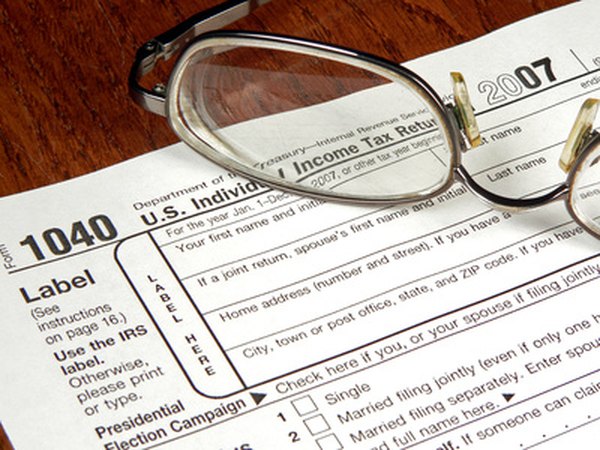Can I Avoid an Early Withdrawal Penalty for Building My House?
First-time homebuyers can avoid the early withdrawal penalty if they qualify.
tax forms image by Chad McDermott from Fotolia.com
To discourage you from raiding your retirement account, the Internal Revenue Service subjects most distributions you take before age 59 1/2 to a 10 percent additional tax penalty. However, if you want to build a house but need to tap a retirement plan, you may qualify for the first-time homebuyer exception to the early withdrawal penalty.
Only First-Time Homebuyers
The exception to the early withdrawal penalty for building your home applies only if you qualify as a first-time homebuyer. According to IRS Publication 590, you are a first-time homebuyer if you have not owned a home during the two years prior to the date you begin building the home. If you are married, your spouse must also meet the requirement. If either you or your spouse does not, neither spouse qualifies for the exception.
Only IRAs
The first-time homebuyer exception for building your home applies only to distributions taken from individual retirement accounts. If you take an early distribution from any other type of retirement plan, such as a 401(k) or 403(b) plan, you do not qualify for the exception and must pay the 10 percent additional tax penalty. However, if you roll the money from the other plan into an IRA and then take the distribution, you will qualify for the exception because the distribution is from an IRA.
Lifetime Limit
The exception is limited to only $10,000 over your lifetime. The limit is a lifetime limit because due to the way "first-time homebuyer" is defined, you could qualify for the exception multiple times. In addition, you can use the exception not only for building your own home, but also a child or grandchild's home if the child or grandchild is a first-time homebuyer. For example, if you use the first-time homebuyer exemption to avoid the penalty on a $6,000 distribution to help your daughter buy her first home, you could use the exemption to avoid the penalty on a distribution of up to only $4,000 to build your own home.
Roth Bonus
If you take the distribution from a Roth IRA, you don't have to worry about taxes or early withdrawal penalties until you've exhausted your contributions in the account. In addition, if you've had your Roth IRA open for at least five tax years, not only does the first-time homebuyer exception avoid the early withdrawal penalty, but it also avoids the income taxes because it makes the distribution a qualified distribution. For example, imagine your Roth IRA is seven years old and has $40,000 in it, $20,000 of contributions and $20,000 of earnings. You could withdraw the first $20,000 of contributions tax- and penalty-free because you made after-tax contributions. Then, the first $10,000 of earnings you withdraw are also tax- and penalty-free because the first-time homebuyer exception makes it a qualified distribution.
References
Writer Bio
Based in the Kansas City area, Mike specializes in personal finance and business topics. He has been writing since 2009 and has been published by "Quicken," "TurboTax," and "The Motley Fool."

